Remembering Marcello Gandini, The Maestro Of Car Design And Father Of The Supercar
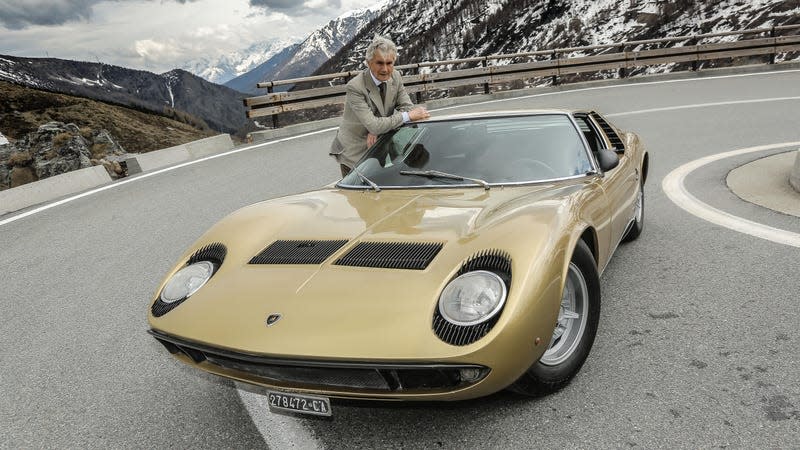
Famed Italian car designer Marcello Gandini passed away this week at age 85, leaving behind a legacy and body of work that may never be topped. When he was just 27 years old, Gandini joined design house Bertone in 1965 after the departure of Giorgetto Giugiaro, starting the Stile Bertone styling division that created both concepts and production cars.
Gandini is best known for his work at Lamborghini, where he created the first true supercar, the Miura, along with a handful of other production models plus the early Countach concept and prototypes for the Diablo. He was a pioneer of wedge-shaped cars, penning revolutionary show cars like the Lancia Stratos Zero (plus its production counterpart) and Alfa Romeo Carabo, the latter of which was the first car to feature scissor doors, and production supercars like the Bugatti EB110 and Cizeta-Moroder V16.
But Gandini’s work spanned far beyond supercars — some of his coolest designs are small hatchbacks. Cars like the Autobianchi A112, Citroën BX, Renault 5 Supercinq, and the Audi 50 and Volkswagen Polo twins were all designed by Gandini. He also created the Alfa Romeo Montreal, the first-generation BMW 5 Series, the Ferrari 308 GT4, the Fiat Dino coupe, the coolest Maseratis ever, and even the Qvale Mangusta. Some of his best work were his 1970s concept cars, which included the Alfa Romeo Navajo, Citroën GS Camargue, Lamborghini Bravo and Jaguar Ascot.
Marcello Gandini will forever be remembered as one of the most groundbreaking, intriguing and talented designers to ever put pen to paper; a singular talent that reshaped the automotive landscape, and whose influence will continue to be felt on cars of all types and segments for decades to come. When people ask me who my favorite designer is, my answer is typically Gandini.
Take a scroll through this slideshow to celebrate 20 of Gandini’s greatest hits — in alphabetical order, otherwise trying to pick a ranking would be impossible. And this was a hard list to narrow down, so let us know your favorite Gandini designs in the comments.
Alfa Romeo 33 Carabo
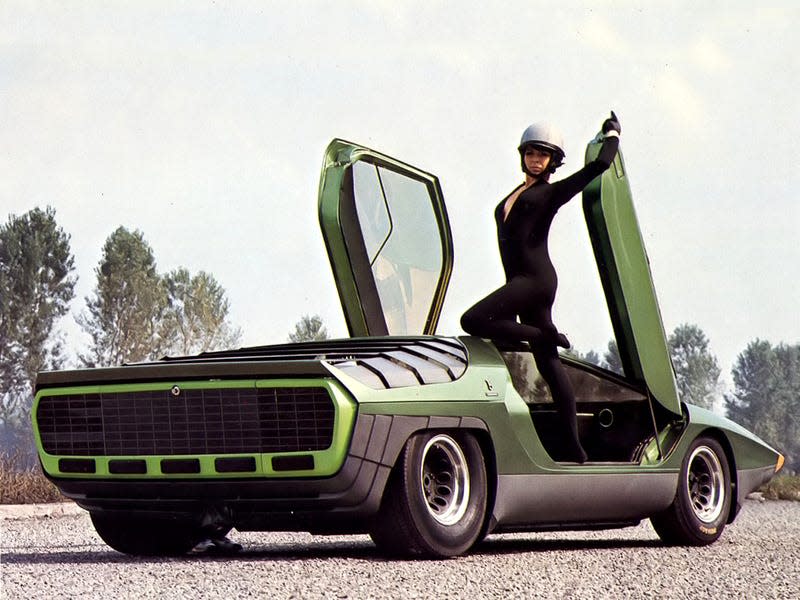
Around half a dozen concept cars were created from Alfa Romeo 33 Stradale chassis, and the first was Gandini’s Alfa Romeo Carabo concept, which debuted at the 1968 Paris Auto Show. The entire car took just 10 weeks to create, and not only does it have the high-revving 2.0-liter V8 engine of the 33 Stradale, but the Carabo was fully functioning.
Gandini had already introduced the Miura a few years earlier, which pioneered the mid-engined supercar, but the Carabo took things another few steps further with its show-stopping wedge shape. Coming in at just 39 inches tall — lower than a Ford GT40 — the Carabo was also the first car to ever feature scissor doors. The green and orange paint scheme is inspired by the shimmering Carabidae beetles from which the Carabo took its name, while the interior is all black suede.
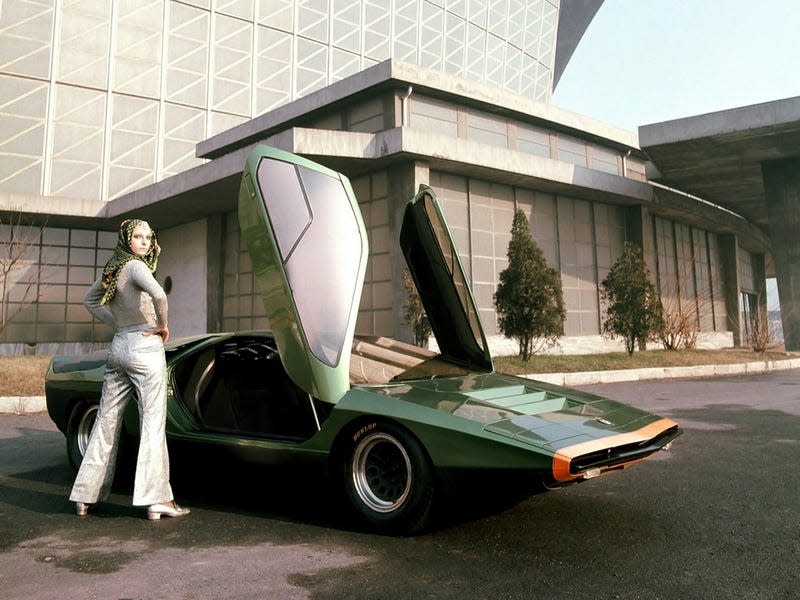
Alfa Romeo Montreal
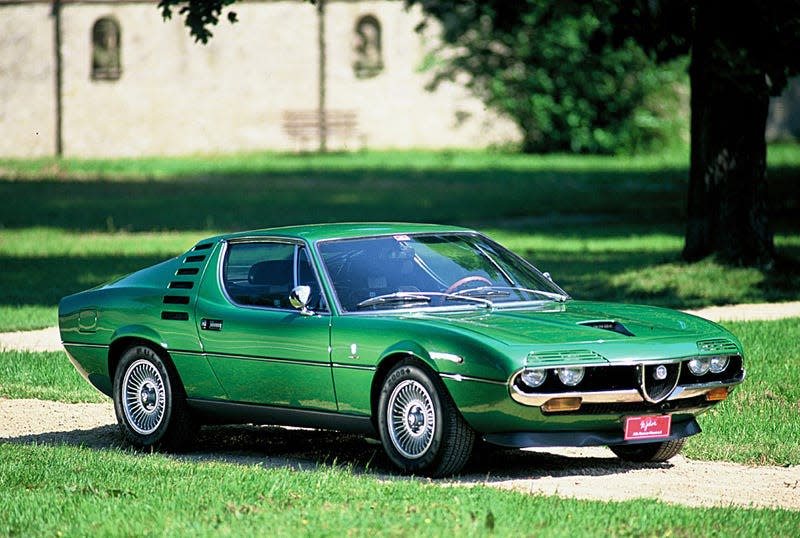
The rear-wheel-drive Alfa Romeo Montreal coupe debuted in 1970, a few years after the concept that Gandini also designed, and only around 3,900 built over seven years of production. I’ve always loved its mini-Miura-esque shape, the distinctive vented headlight covers, that NACA duct in the hood, and those horizontal C-pillar slats, which act as the cabin air vents.
E12 BMW 5 Series
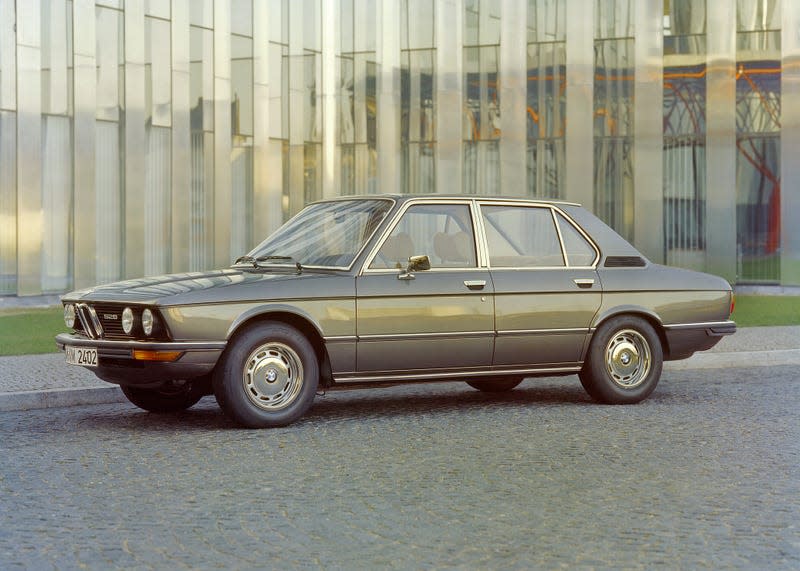
Gandini was hired to style the first-generation BMW 5 Series alongside Paul Bracq after creating the 2002-based Garmisch concept (below) in 1970, which was lost to time and recreated by BMW a few years ago. His influence on the production E12 5 Series is obvious in its shark-like nose, angular greenhouse and crisp details. Fifty years later, new BMWs are once again featuring some of these same cues.
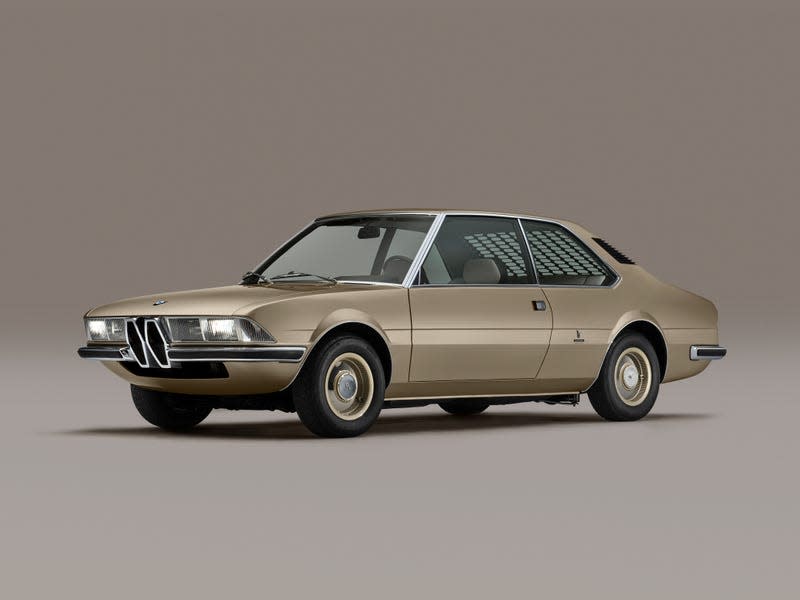
Citroën BX
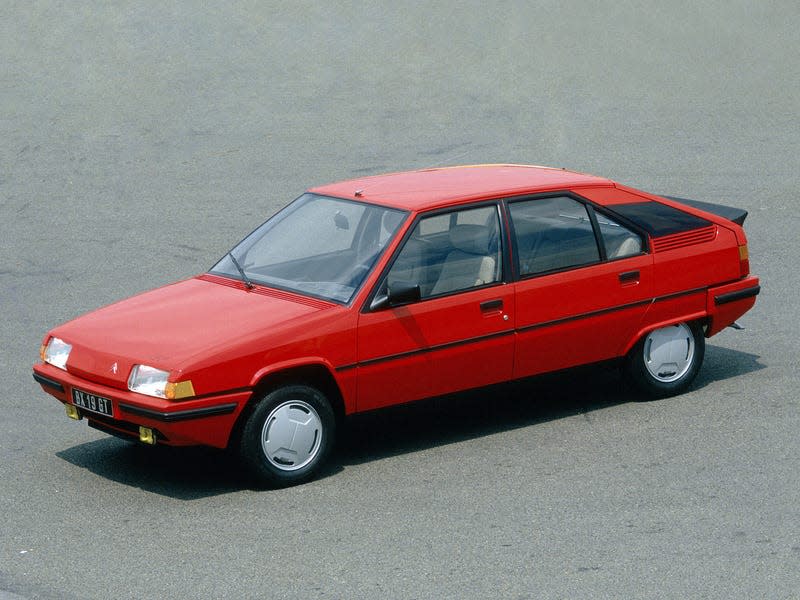
One of my personal favorite Gandini designs (and one of my favorite Citroëns), the BX debuted in 1982 as a replacement for the successful but much less radical GS. Despite sharing its underpinnings with the Peugeot 405, the BX still had Citroën’s iconic hydropneumatic self-leveling suspension. In total, more than 2.3 million BXs were sold over 12 years of production.
The BX has a simple but expressive and friendly face, which can be tough to achieve using only straight lines. I love the sharp angle to the rear hatch and C-pillar, and some BX models got an additional quarter window in the pillar above the side vent. Like many other Gandini designs the BX has a partially covered rear wheel arch, something that could easily look forced but never does.
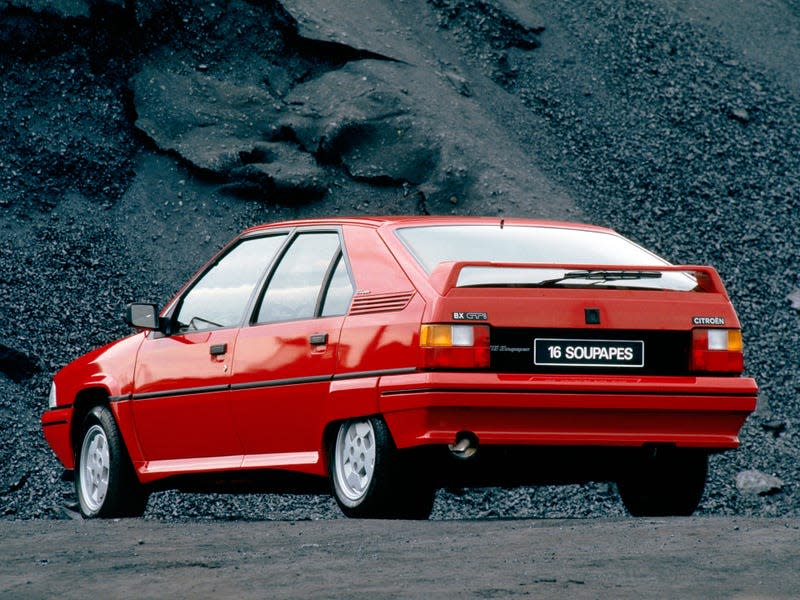
Some special editions added additional body cladding and sporty styling elements, but nothing was as cool as the BX 4TC, a homologation special created for Group B rallying. Sadly, the 4TC was a total flop in competition, and after its third race Group B was shut down for good. Only 62 out of the minimum required 200 units were ever built.
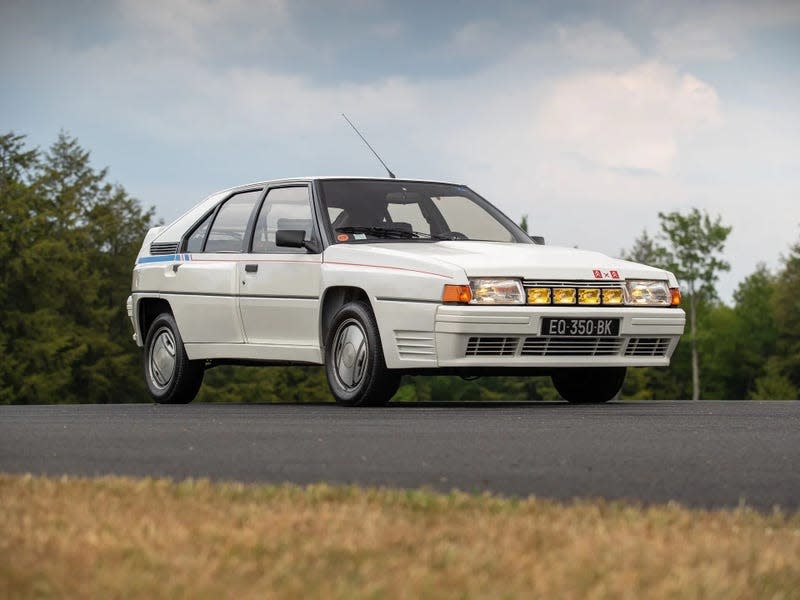
Gandini even featured in a fantastic commercial for the BX:
Cizeta-Moroder V16T
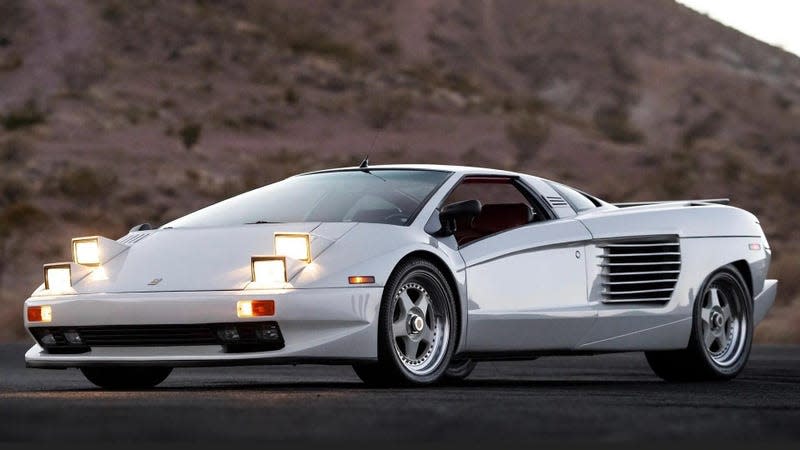
Created by a group of ex-Lamborghini employees in partnership with iconic music composer and producer Giorgio Moroder, the 1991 Cizeta-Moroder V16T is an obvious evolution of Gandini’s early Lamborghini Diablo design proposals. Its quad pop-up headlights and straked side vents are super distinctive, and Gandini’s slashed wheel arch is echoed by the car’s shoulder line and rear bumper profile. In profile it looks kinda goofy, with a short greenhouse, long rear deck and tall haunches — chalk that up to the amount of room required for 16 cylinders.
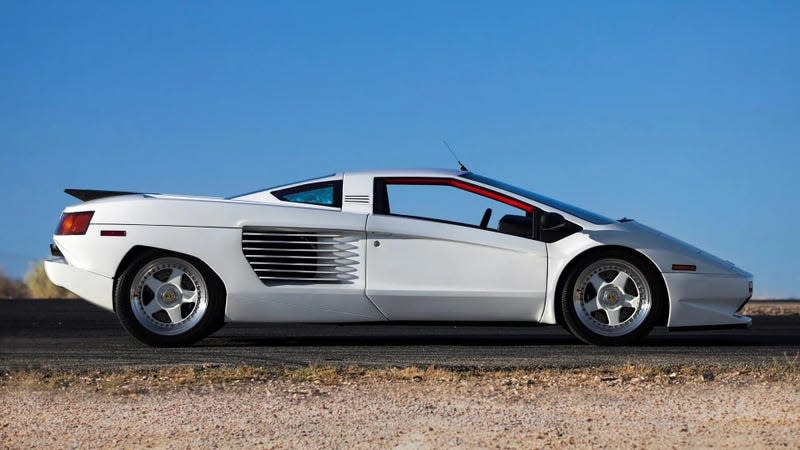
Mounted transversly behind the passenger compartment, the Cizeta’s 6.0-liter V16 engine was essentially two Lamborghini Urraco V8s stuck together, though with a single aluminum cylinder block. With 540 horsepower and 400 lb-ft of torque sent to the rear wheels through a five-speed manual transmission, the V16T was said to reach a top speed of 204 mph and hit 62 mph in just 4 seconds, pretty good numbers for the day.
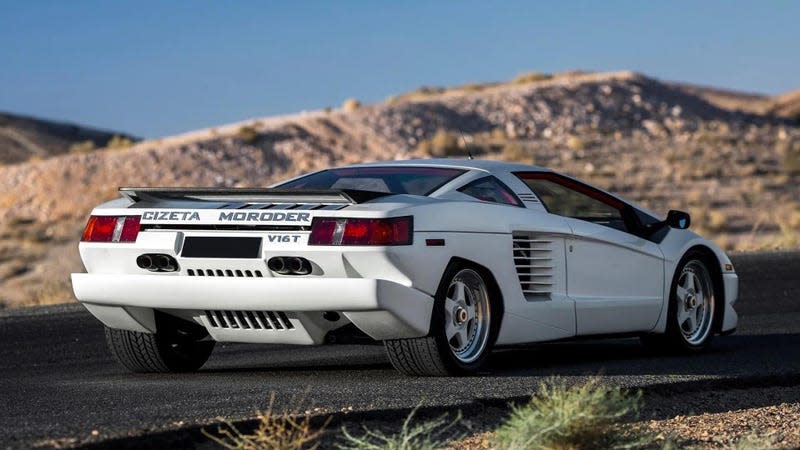
Moroder dropped out of the joint venture after the initial prototype was built due to disputes over money and technical details about the car, so subsequent cars didn’t wear Moroder’s name or logo. Only around a dozen V16Ts were ever built at a cost of $650,000 each. Allegedly you can still order one now, as company founder Claudio Zampolli considers the car to be still in production, but it doesn’t seem like a new Cizeta has been built since 2003. The lone Moroder-badged prototype sold for almost $1.4 million at auction in 2022 after having been owned by Moroder himself since new.
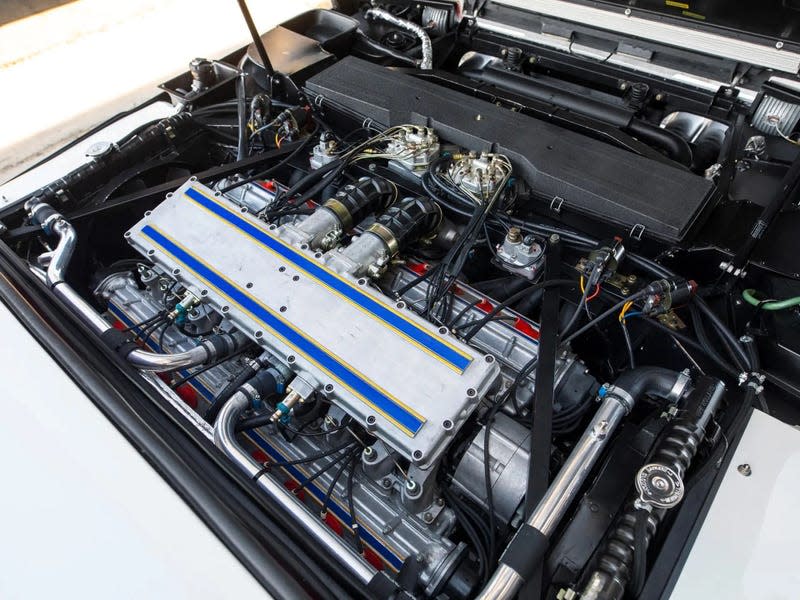
Ferrari 308GT Rainbow
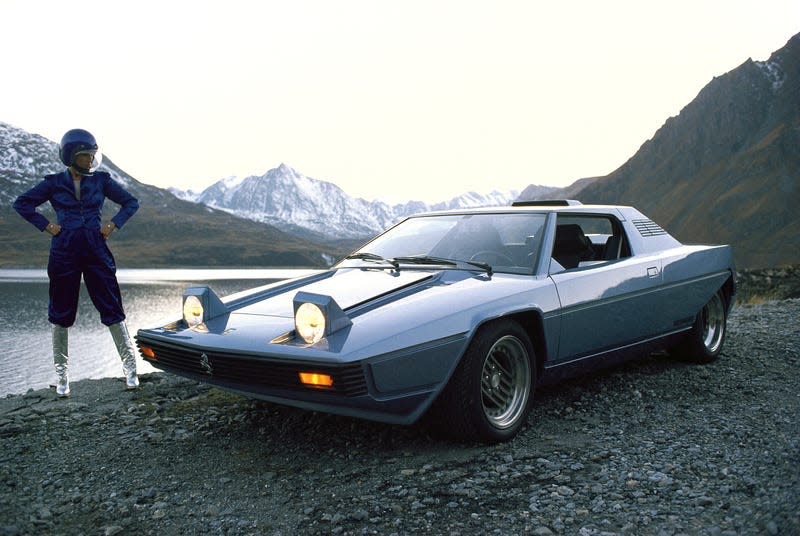
Part of the reason I find this car so incredible is just the name, I will admit, but it is a fantastic design. Ferrari had already been experimenting with wedge designs, including the Gandini-penned Dino 308 GT4, but the 1976 308 GT Rainbow concept took it to another level. It was Gandini’s attempt to retain Bertone’s contract with Ferrari, but it ended up as the final Bertone Ferrari ever made.
Wider and shorter in length than a normal 308 GT4, the Rainbow has one of Gandini’s harshest rear wheel arch angles, chamfered grooves along the body side and hood, and a flat deck with a rectangular bulge. It’s an early example of a full-width taillight bar, too. The targa-style roof panel manually rotated 90 degrees to stow between the seats and engine compartment, leaving the sci-fi targa bar in place.
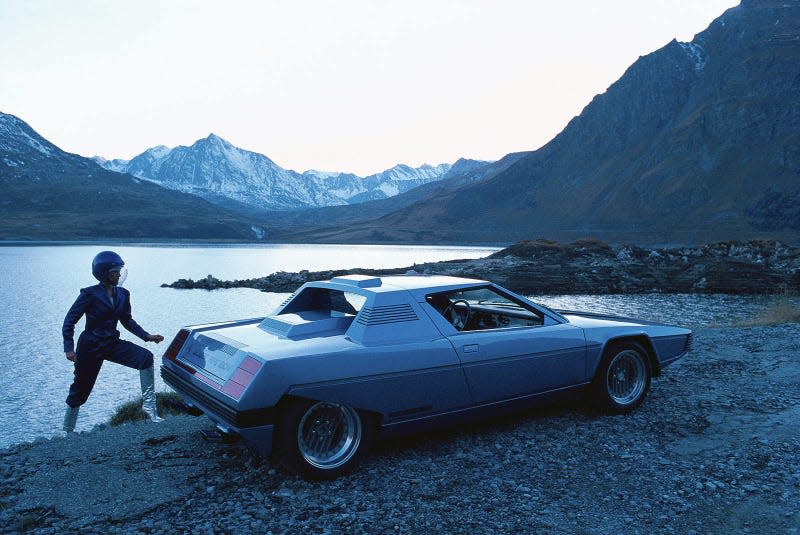
Fiat Dino Coupe
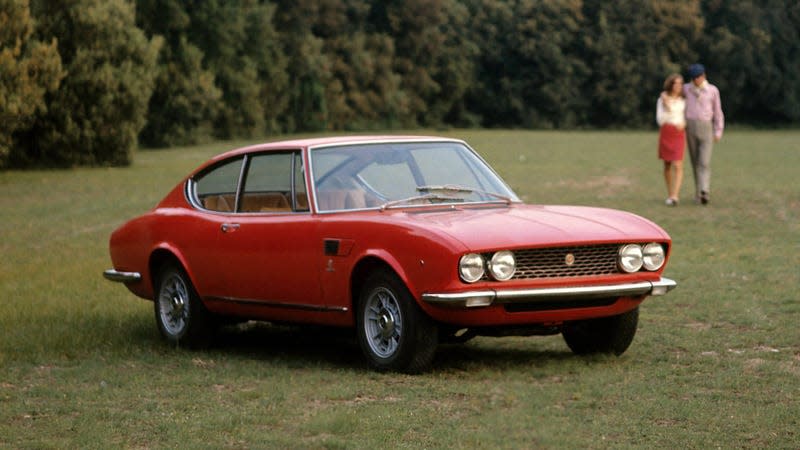
Finished by Gandini after initially being sketched out by Giugiaro before he left Bertone, the Fiat Dino Coupe is proof that Gandini could do more than just an angular wedge, though it’s free of many of his traditional flourishes. Less sensual and more handsome than the Pininfarina-designed Dino Spider, the Dino Coupe had a longer wheelbase but shared the same V6 engine. Out of the 7,803 Dinos that were produced in total, 74 percent were the Coupe.
Fiat X1/9
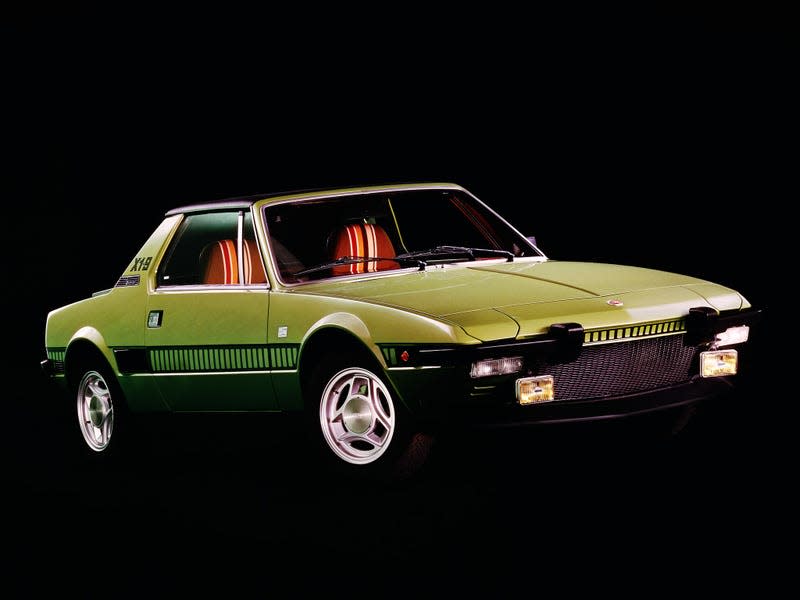
Gandini brought his supercar stylings to the masses with the 1972 Fiat X1/9, which was a development of his 1969 Autobianchi Runabout concept. The mid-engined X1/9 used the powertrain and some chassis components from the Fiat 128, with early models making 74 horsepower. Its angular shape still looks fresh today thanks to excellent proportions and details, and it was the first Fiat designed with U.S. regulations in mind. Around 140,000 were built from 1972 to 1982, after which Bertone took over and sold just under 20,000 between 1982 and 1989 with its own badge on the hood.
Lamborghini Countach LP500
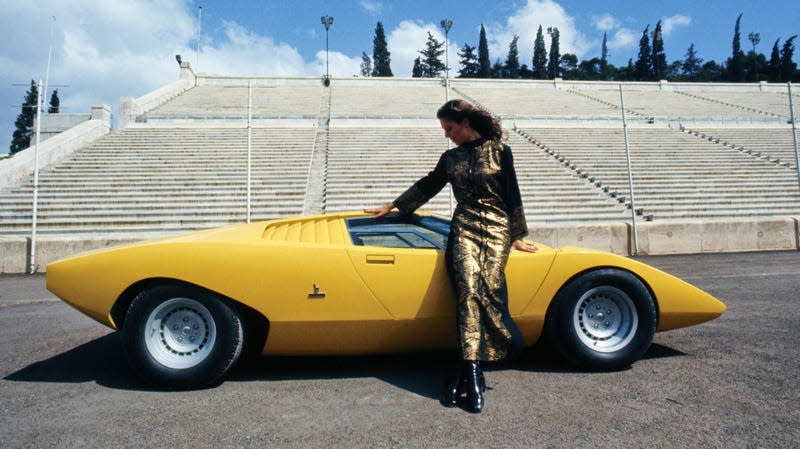
Following the launch of the Miura, Gandini really started experimenting with his now-ubiquitous wedge designs, so it’s no surprise that the Miura’s successor took the wedge shape to the extreme. The Countach LP500 prototype debuted in 1971, and it took the world by storm. Its shape seemed impossible, with the profile one continuous line from nose to tail. The Countach featured the scissor doors that Gandini had invented on the Alfa Carabo a few years before, and aside from some very nicely integrated vents and trapezoidal details, styling flourishes were kept to a minimum — with one major exception being the rear wheel arch.
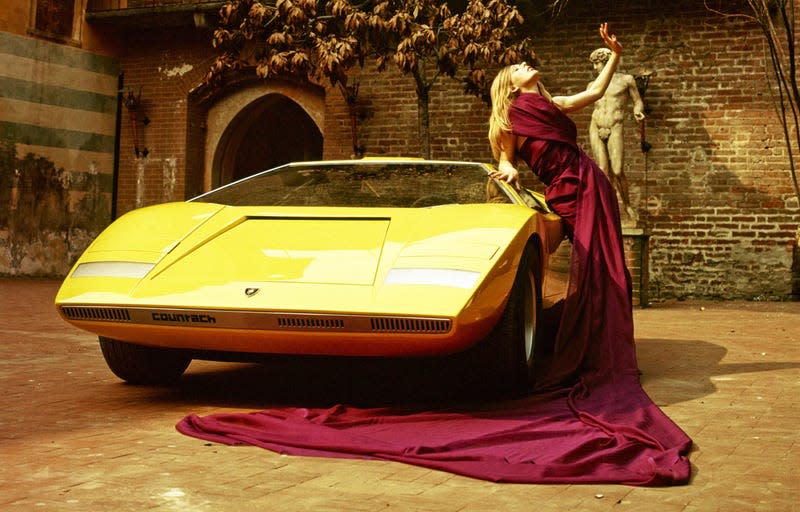
The subsequent production model and later updates that Gandini didn’t work on added more ducts, wings and big fender flares, which have always proven to be divisive. But Gandini’s spirit was always apparent in every Countach, especially when viewed in profile. Gandini is even the one who came up with the Countach’s name — a Piedmontese expression of amazement that was often said by one of the modelers, Gandini jokingly said the car should be called Countach, and it stuck.
While the Miura pioneered the supercar format and his more regular creations sold in vastly higher numbers, it’s the Countach that is likely Gandini’s most enduring achievement. The ultimate poster car, even decades after its launch the Countach remains the dream machine, and it influences new cars to this day.
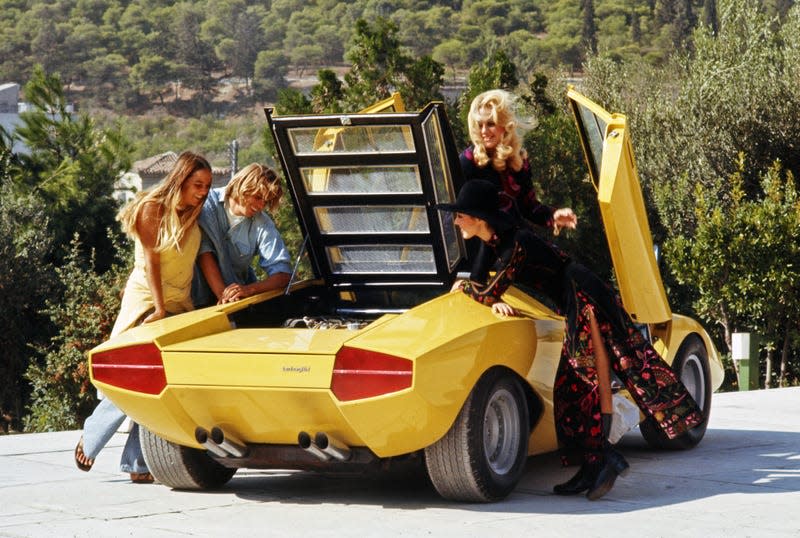
Lamborghini Marzal
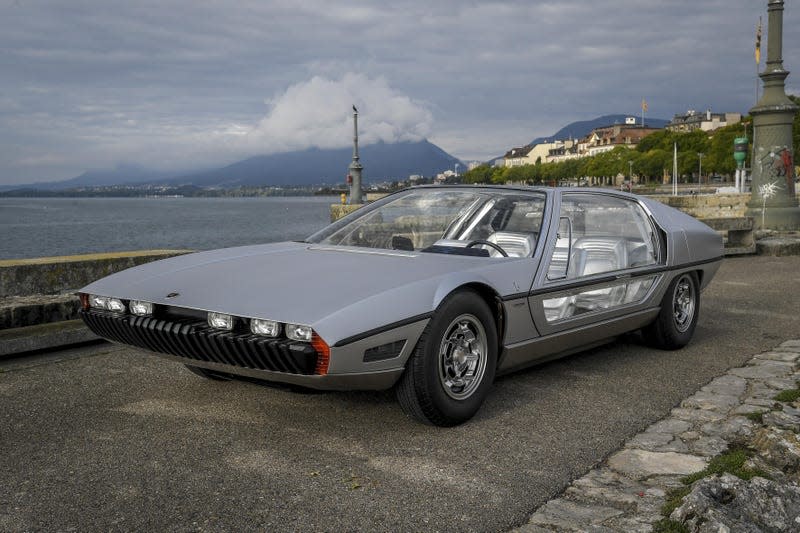
Who doesn’t love a car with glass gullwing doors? Shown at the 1967 Geneva Motor Show, just months after the Miura was launched, the Marzal concept was created to give Lamborghini a true four-seat successor to the 400GT. Ferruccio Lamborghini saw the Marzal more like a piece of advertising, but much of its design and ideas was found in the Espada that followed a year later (also a Gandini design). It’s got a wonderful shape with some very interesting details, like the trim line that creates the rear arch shape and the six rectangular headlights set above a razor-like bumper.
The hexagonal theme found throughout the Marzal is still used by Lamborghini today, though sadly I’ve yet to see a new Lamborghini with a shiny silver interior. Forty-eight square feet of glass was used on the Marzal, and an air conditioning system was fitted to keep the cabin cool. Its 2.0-liter inline-6 engine, which was basically Lambo’s V12 sliced in half, was mounted behind the rear passengers — pretty amazing packaging considering how much space the cabin provides.
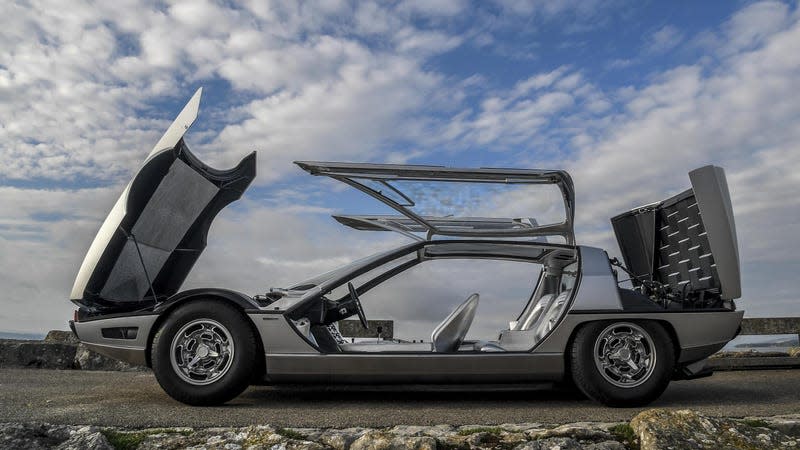
Lamborghini Miura
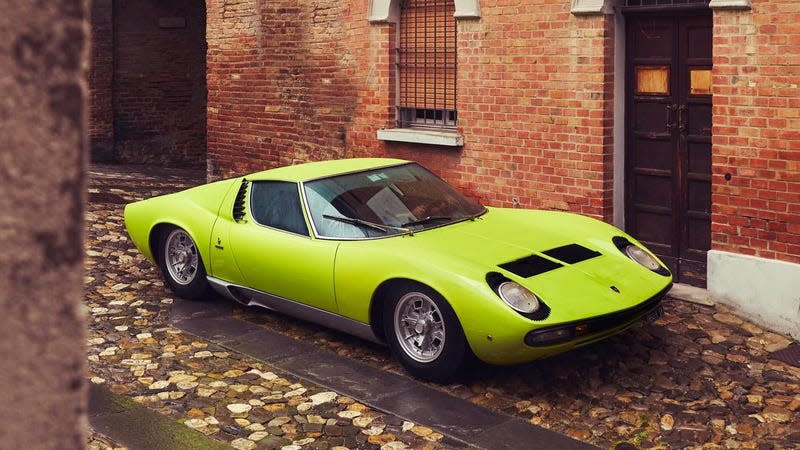
The king of the supercars, the Lamborghini Miura launched in 1966 as the first production car to feature a mid-engine layout. Thanks to its transversely mounted V12 engine, the Miura had proportions and a shape unlike any car before. I mean, what can I say about the Miura that hasn’t been said before? It’s just perfect, proof that supercars can just be beautiful without looking angry or race-ready.
The Miura was further immortalized and seared into the minds of car enthusiasts across the globe in 1969's The Italian Job, which must have been my first time encountering the car outside of a book or magazine. The movie opens with a gorgeous orange Miura driving through the Alps as “On Days Like These” plays alongside the credits — until the Miura enters a tunnel and is wrecked by the Mafia, who then throw it off a cliff using a bulldozer. I don’t think there’s ever been a more iconic automotive opening scene.
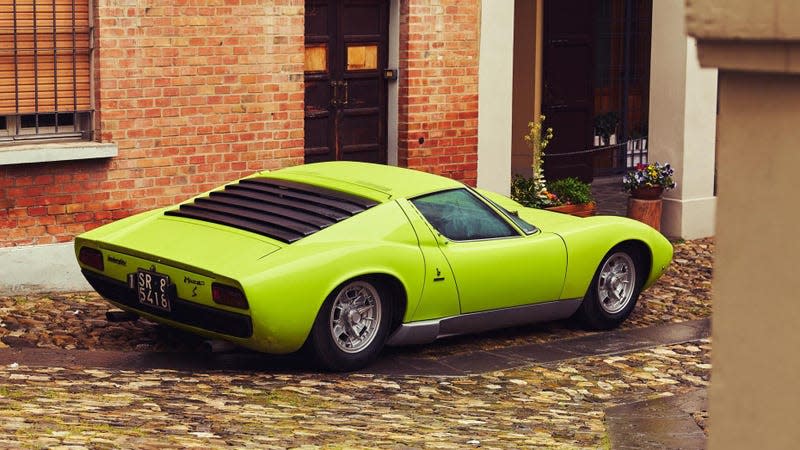
Lancia Sibilo
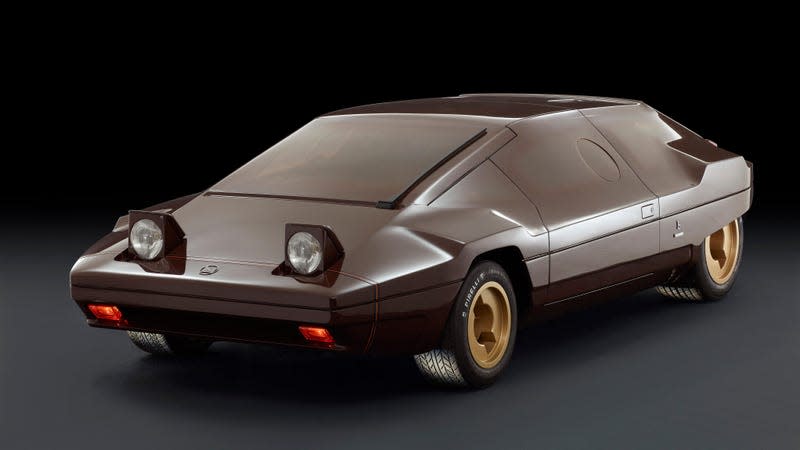
Another one of my favorites and easily one of Gandini’s weirdest, the Stratos-based Lancia Sibilo concept was shown in 1978. Its polycarbonate windows seemed to meld into the brown bodywork, with the circular window opening sliding forward, and the windshield wiper even moves horizontally. The body, another amazing wedge, is all hard angles and straight lines, and rally-like squared-off wheel arches house some of Gandini’s coolest wheels ever. Despite its seemingly simple surfacing, light hits the Sibilo in a marvelous way.
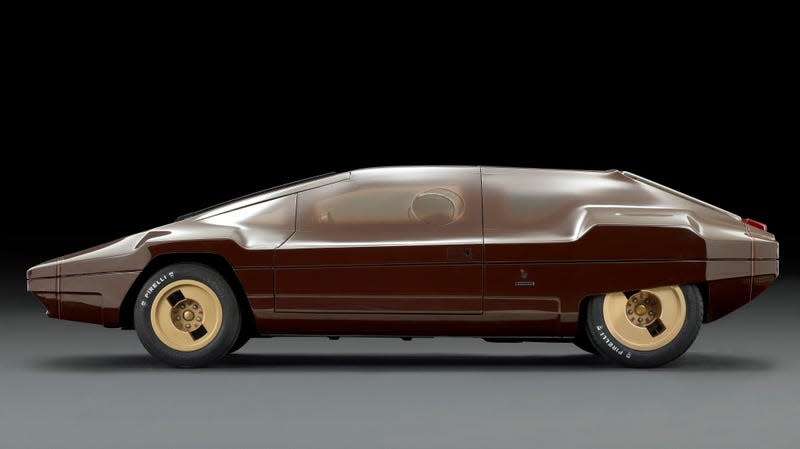
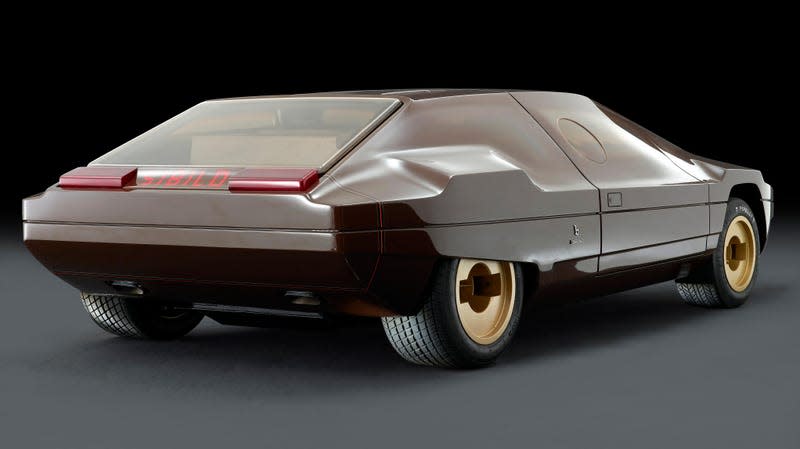
Lancia Stratos Zero
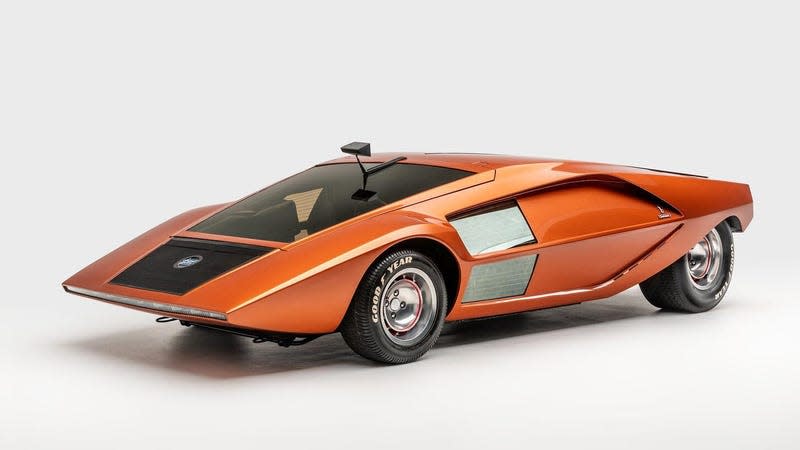
Perhaps Gandini’s most important design — and one with some of the biggest cultural impact — the Lancia Stratos Zero concept touched down like a spaceship at the 1970 Turin Motor Show. Standing just 33 inches tall (and shorter than a Mini Cooper in length), the Stratos Zero is ultimate expression of the wedge shape. It’s like a giant rhombus, with the nose starting at shin height and continuing as an unbroken line, until just behind the pilots’ head where the roofline angles back down, coming to a point at the rear end.
The long windshield flips up so the driver and passenger can get in and out of its heavily padded seats, and their seating position is so low they look out of a pair of rectangular windows just behind the front wheels on each side of the car — the mirrors are tiny triangles scooped into the front fender. The side view is divided by a rising line that gives the Stratos Zero an origami-like shape; or it looks like a ray gun from Barbarella. (The whole thing gives Barbarella, actually.)
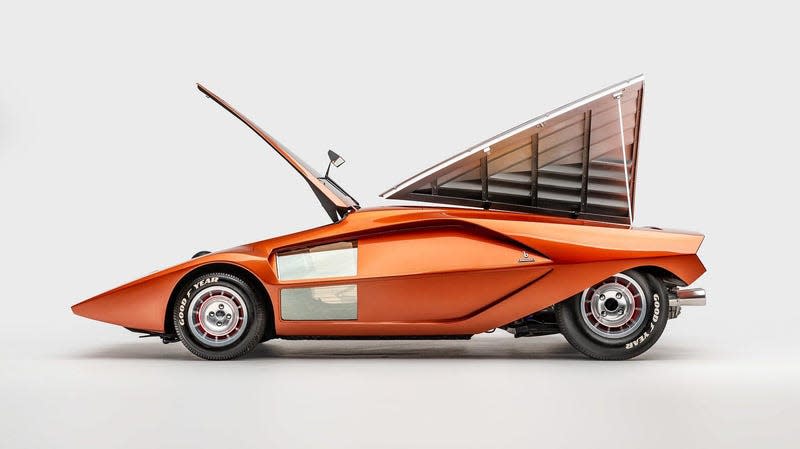
The louvered engine cover is a huge triangle that’s hinged on the side, which looks incredible when open. A strip of lights surrounds a slim mesh panel that stretches across the rear, and just below is a prominent pair of exhaust tips, lots of exposed mechanicals and those fat rear tires. And once again, Gandini’s glorious wheel arch is here, flowing nicely off the bottom of the car at the same angle as the side surfacing.
The whole thing is just utterly spectacular; it’s stupendous; it’s superb. It’s like nothing that has ever existed or will ever exist. It’s one of the cars I see the most consistently posted on Instagram dumps or TikTok moodboards of people who are not into cars — major celebrities, filmmakers, fashion designers and other tastemakers. People might not know the Stratos Zero, but they know the Stratos Zero.
Fitting for the Stratos Zero’s styling and space-age inspiration, it was even featured in Michael Jackson’s 1988 movie “Moonwalker.” In the scene Michael is cornered by gangsters in an alley and literally morphs werewolf-style into a bullet-proof Stratos Zero, doing an explosion-causing burnout before rocketing toward the baddies, taking off into the sky and then landing back on the road and driving off at an impossible speed.
Best of all? The Stratos Zero is still fully functional, using a mid-mounted Lancia V4 engine. I’m fortunate enough to have seen the car a number of times and even know the current owner, who not only takes it to car events all around the world but actually drives the thing on public roads, including in the snow in St. Moritz — it’s even got the California vanity plate STRATOS. Nothing in my life has felt like the first time I saw the Stratos Zero driving through Beverly Hills.
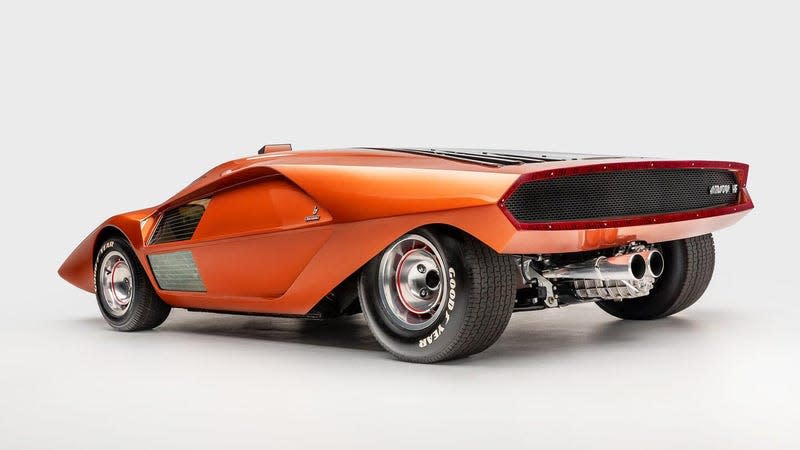
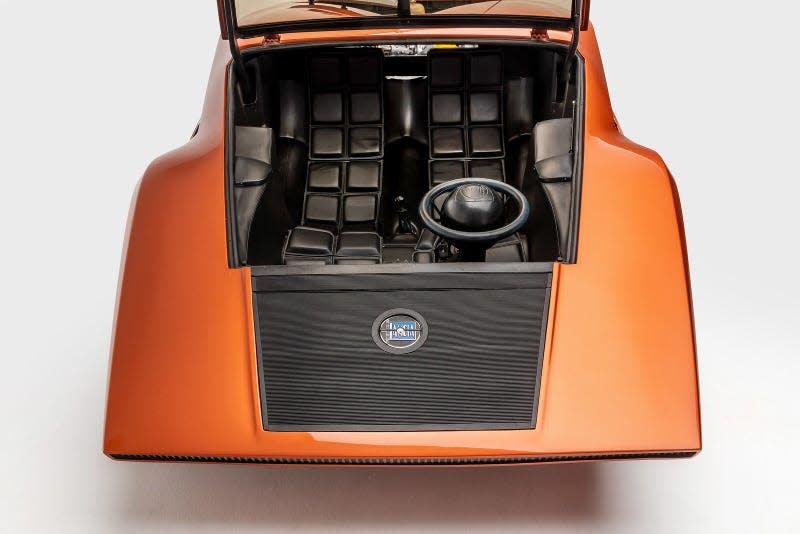
Maserati Khamsin
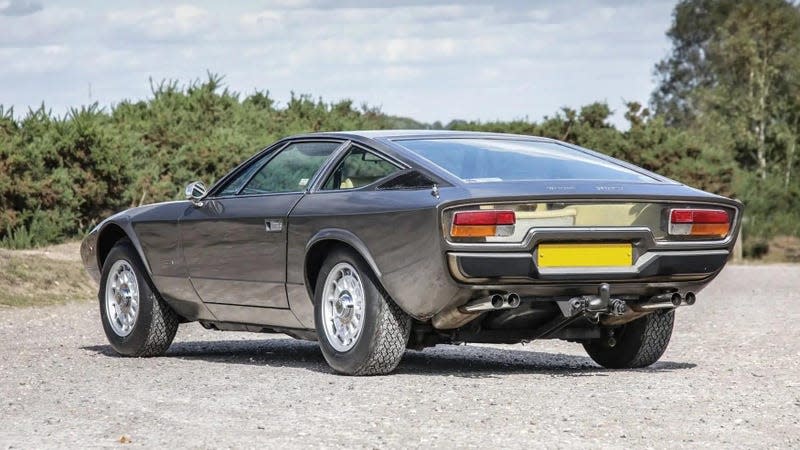
The successor to the Ghibli, the 1974 Maserati Khamsin was a stunning four-seat grand-tourer with a really interesting design feature. The kammback tail features a glass panel spanning the whole rear end above the bumper, with the taillights inset into the glass itself. Sadly, this wasn’t allowed in the U.S., so our Khamsins had a much uglier design with the lights mounted lower where the bumper would be, and the bumper even lower than that.
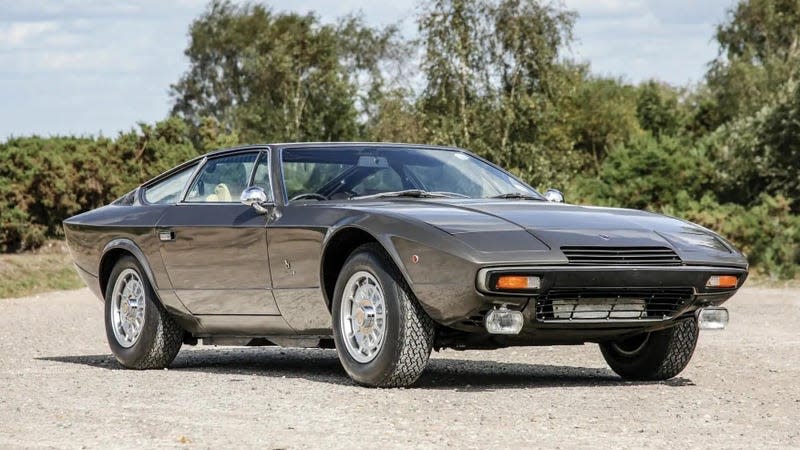
Regardless of taillight setup, though, every Khamsin is stunning. Its design is super cab-rearward, with a pointy nose and long hood, a swept-back windshield, a dramatically tapered tumblehome and a near-horizontal glass hatch. A sharp line runs across the shoulder, meeting the rear end where the fastback hatch comes to a point. Over an eight-year span only 435 Khamsins were built, 155 of which came to America.
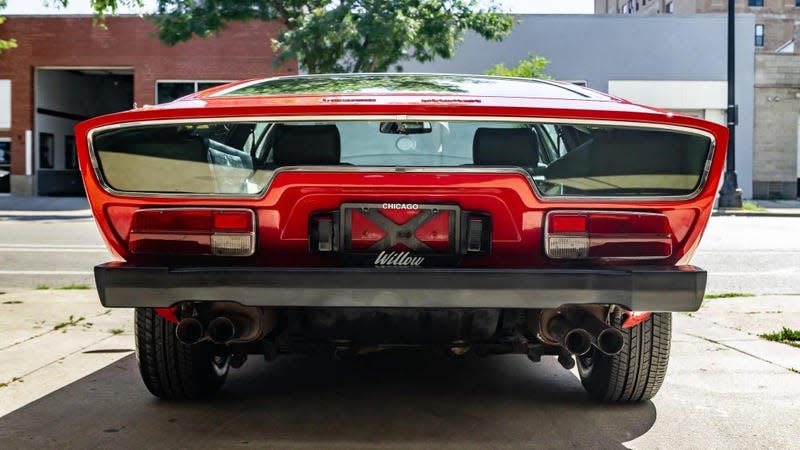
Maserati Quattroporte IV
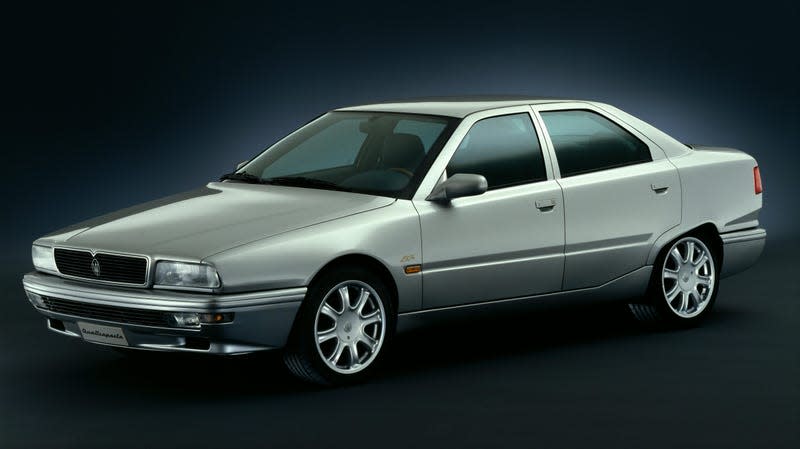
Probably my favorite Maserati design ever, the fourth-generation Maserati Quattroporte was Gandini’s second crack at a Quattroporte, after having designed the second-gen model, of which only 12 were made. The Quattroporte IV was much smaller than its predecessor — it’s about the same size as an E90 3 Series — and had a choice of twin-turbo V6 or twin-turbo V8 engines. The 3.2-liter V8s had 330 horsepower and could hit 60 mph in less than six seconds, and a 6-speed manual was the only option.
The Quattroporte IV has fabulous proportions, and it’s another example of the wedge shape working surprisingly well in an unexpected segment. Its low shark nose appears even more pronounced than on its Ghibli coupe sibling, the rear glass is more steeply raked, and the Quattroporte has broad shoulders and smooth surfacing with tight chamfers. Gandini’s wheel arch is perfect here; I love how the door seam follows its counter. Only 2,400 were made between 1994 and 2001.
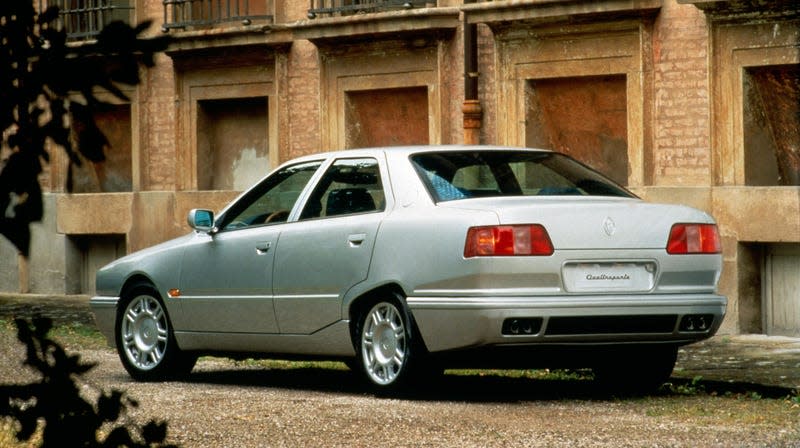
Maserati Shamal
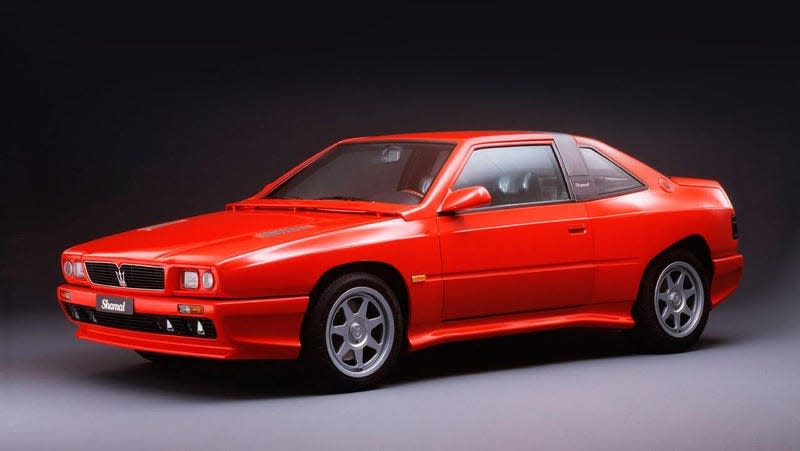
The Shamal is the wildest version of Maserati’s Biturbo/Ghibli/Quattroporte family of the 1990s, and it was the last model launched under DeTomaso’s ownership. It used the shorter chassis of the Zagato-bodied Biturbo Spyder, and it debuted the twin-turbo V8 that was used in the Quattroporte. Maserati describes the Shamal as being “intended for skilled drivers.” Only 369 were made from 1990 to 1996.
Because the brand didn’t have the money to design an entirely new car, the Shamal shares many of its body parts with the Biturbo, but it has plenty of unique styling elements. That basket-handle B-pillar is an actual structural roll bar, wrapping around the roof, and the Shamal has an intriguing front spoiler at the base of the windshield that was meant to improve aero and push down the wipers at high speeds. The Shamal also received an aggressive body kit, flared fenders and that wonderful rear arch.
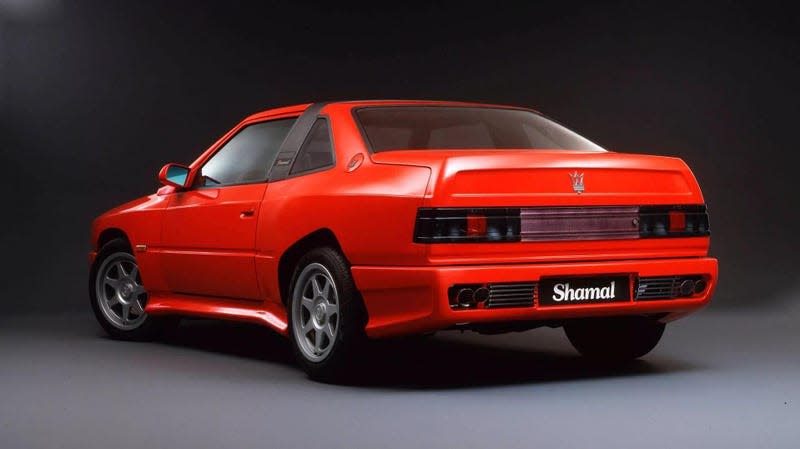
Nissan AP-X
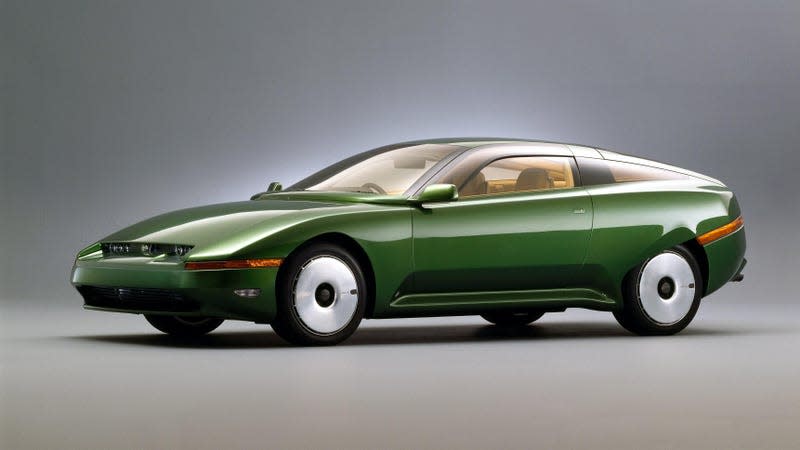
One of Gandini’s final concept designs was the 1993 Nissan AP-X. A vision of what a successor to the 300ZX could look like, the AP-X was all about aerodynamics, boasting a drag coefficient of just 0.20 — the same as a Mercedes-Benz EQS. Its 3.0-liter V6 made 250 horsepower, and the AP-X used a CVT transmission. Nissan said it offered sports car performance but economy car efficiency.
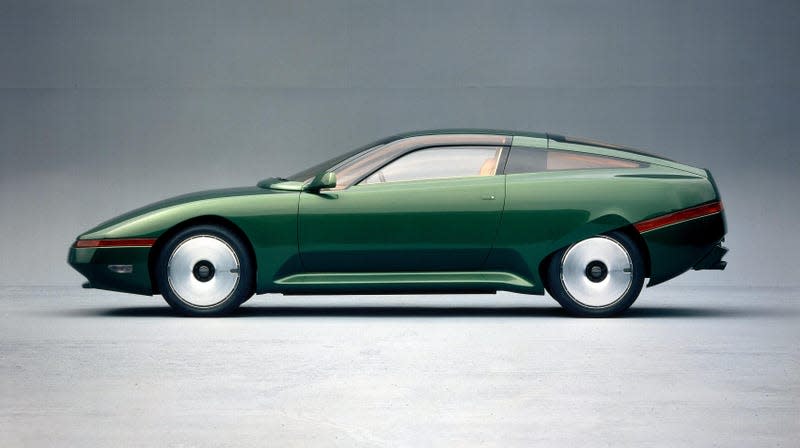
It’s decidedly smooth while still retaining the wedge shape, with detailing kept to a minimum. The tiny headlights are inset into the low nose, and there’s only a single small intake lower in the bumper. The sleek greenhouse still looks incredible, with window-within-windows at the sides, flush glazing and an expansive curved glass hatch. I especially love how the Gandini rear arch flows into the wraparound taillight bar, with a bit of a flare just above the wheel opening.
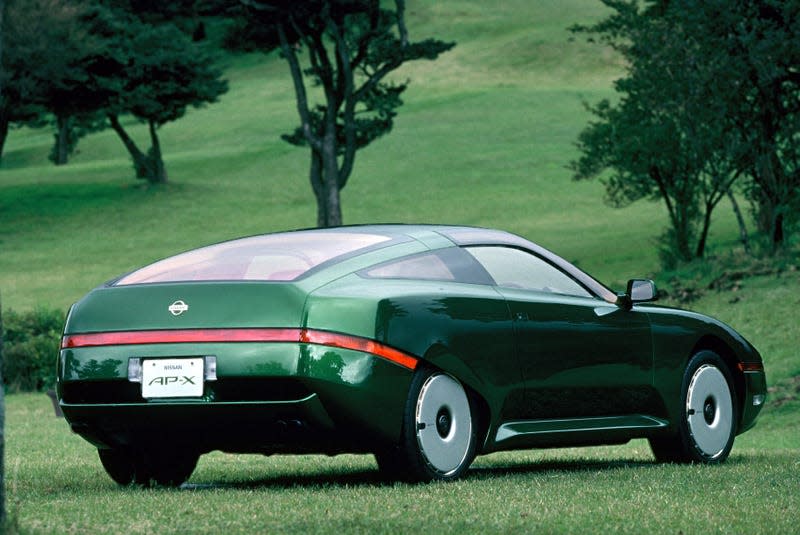
Renault 5 Turbo
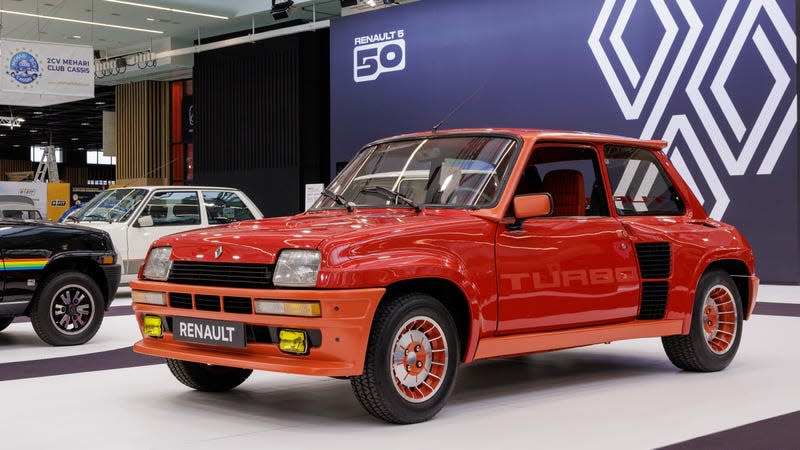
Bertone was tasked with designing the rally ready Turbo version of the first-generation Renault 5, which was transformed from a front-engine, front-wheel-drive hatch into a mid-engine, rear-wheel-drive monster. The Renault 5 Turbo got massive boxed fender flares with large vents, new bumpers with big rally lights, and incredible colors and graphics packages. It was the most powerful French car you could buy at the time, and the 5 Turbo was successful in rallying.
Renault 5 Supercinq
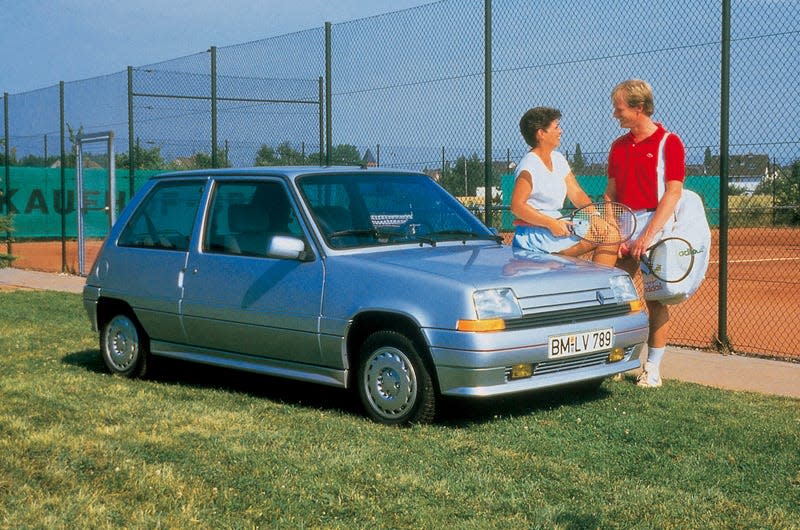
After Gandini designed the 5 Turbo, he was assigned the task of coming up with the second-gen 5, which was dubbed the Supercinq. Thoroughly modernized without getting rid of the original 5's spirit and design ethos, the Supercinq was more aerodynamic, more spacious and more refined. Gandini’s touch is visible in the wheel arch, of course, and the angled rear end. While it never got a mid-engined rally version, there was a Renault 5 GT Turbo hot hatch that could hit 60 mph in 7.5 seconds.
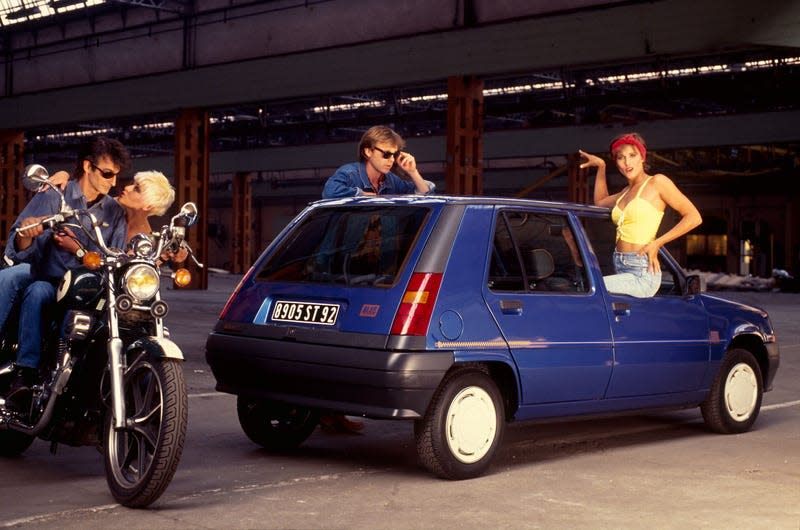
Volvo Tundra
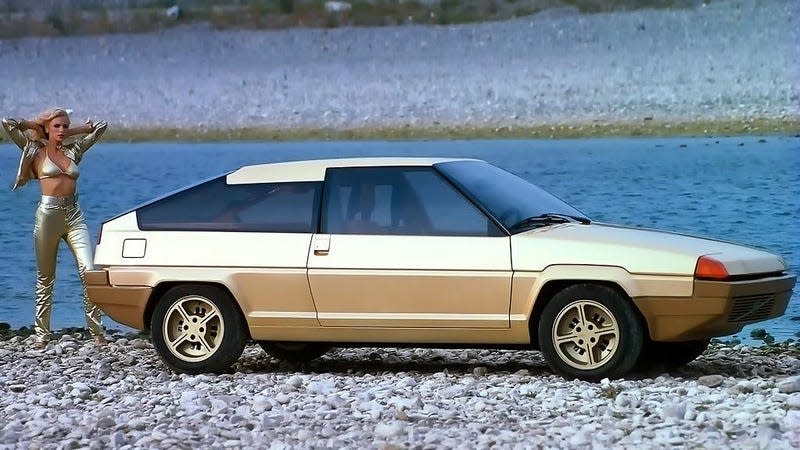
If this 1979 Volvo Tundra concept looks familiar, it’s because Gandini turned it into the Citroën BX design after Volvo decided to go in a different direction, deeming it too modern and too tough to sell. It was built on the front-drive 343 and used a regular four-cylinder engine, but the Tundra’s design was anything but regular.
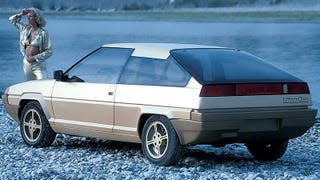
I love the off-center grille, the strange window shapes, the orange corner lights, the boxy wheel arches and the two-tone brown paint. It’s got a front-hinged clamshell hood and a large glass hatch, and the (also brown) interior had digital instruments. Later in the 1980s Volvo debuted its own production two-door hatchback, the wedgey 480, which was definitely influenced by the Tundra but wasn’t quite as cool.
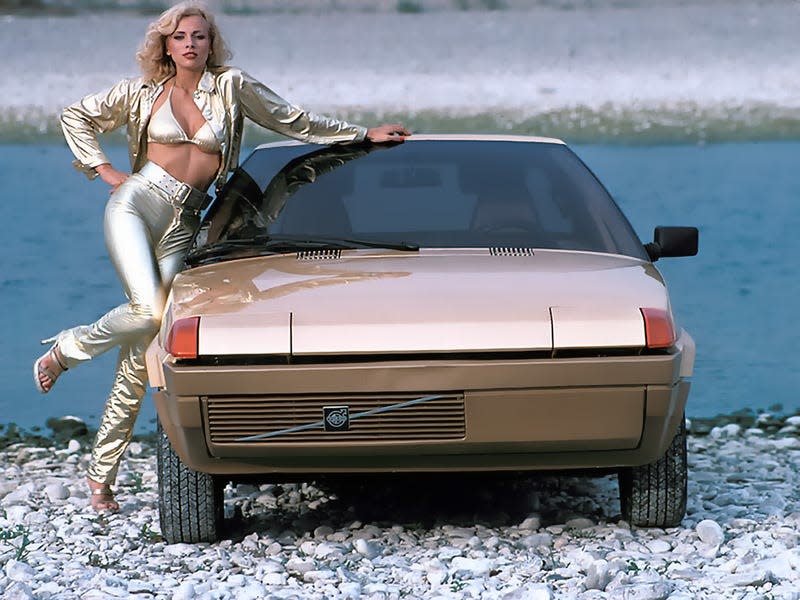

 Yahoo Autos
Yahoo Autos 